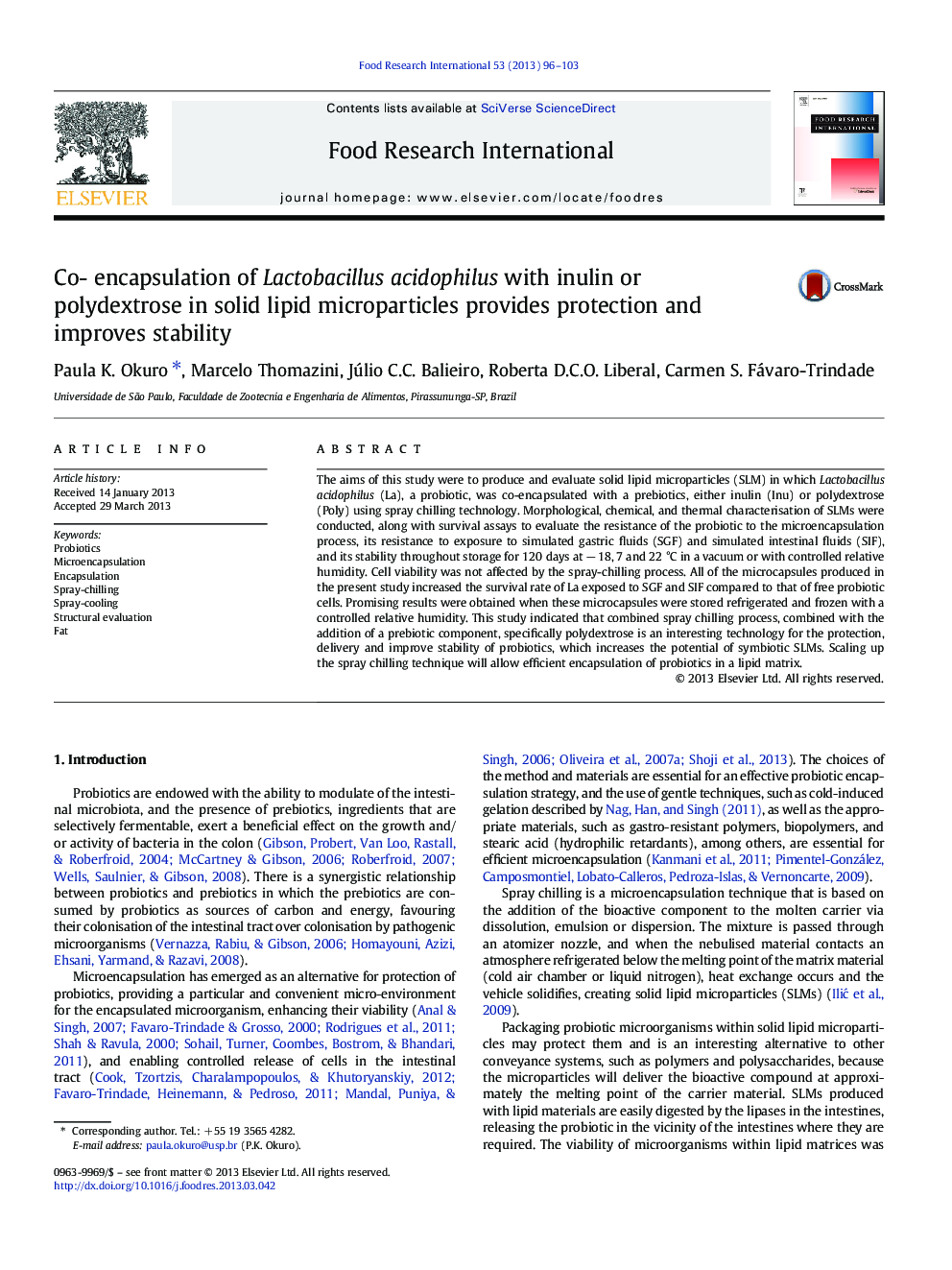| Article ID | Journal | Published Year | Pages | File Type |
|---|---|---|---|---|
| 6397673 | Food Research International | 2013 | 8 Pages |
â¢Solid lipid microparticles (SLM) are potential vectors for probiotic and prebiotics.â¢SLM may release probiotic during digestion of fat in the intestine.â¢SLM with polydextrose kept the microorganisms viable for 120 days of storage.â¢Encapsulation by spray chilling enhanced survival to simulated gastrointestinal conditions.
The aims of this study were to produce and evaluate solid lipid microparticles (SLM) in which Lactobacillus acidophilus (La), a probiotic, was co-encapsulated with a prebiotics, either inulin (Inu) or polydextrose (Poly) using spray chilling technology. Morphological, chemical, and thermal characterisation of SLMs were conducted, along with survival assays to evaluate the resistance of the probiotic to the microencapsulation process, its resistance to exposure to simulated gastric fluids (SGF) and simulated intestinal fluids (SIF), and its stability throughout storage for 120 days at â 18, 7 and 22 °C in a vacuum or with controlled relative humidity. Cell viability was not affected by the spray-chilling process. All of the microcapsules produced in the present study increased the survival rate of La exposed to SGF and SIF compared to that of free probiotic cells. Promising results were obtained when these microcapsules were stored refrigerated and frozen with a controlled relative humidity. This study indicated that combined spray chilling process, combined with the addition of a prebiotic component, specifically polydextrose is an interesting technology for the protection, delivery and improve stability of probiotics, which increases the potential of symbiotic SLMs. Scaling up the spray chilling technique will allow efficient encapsulation of probiotics in a lipid matrix.
